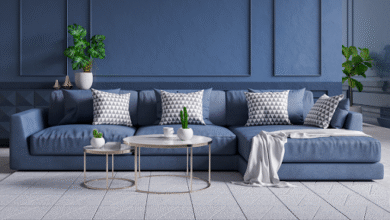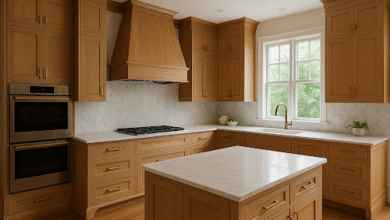7 Types of Antique Furniture That Could Require Repair

Antique furniture can add a touch of elegance and charm to any room, but it requires special care and maintenance. Over time, the wear and tear on antique furniture can become more pronounced, requiring repairs to bring it back to its former glory. In this post, we will take you through the seven different types of antique furniture that could require repair.
From wooden antique furniture to mid-century modern furniture, we’ll cover everything you need to know about each type. We’ll discuss common issues such as cracks, scratches, and loose joints and provide tips on how to fix them. Whether you’re a seasoned antique collector or just starting out, our guide will help you keep your prized possessions in top condition for years to come.
Introduction
Antique furniture is delicate and requires care and attention. DIY repair may be okay for minor cleaning, but larger repairs should always be done by professionals to avoid causing more harm. Antique furniture restoration involves repairing structural damage, restoring worn-out surfaces, and refinishing it to regain its original beauty. Professional furniture restoration services have been restoring fine quality antique furniture for over 40 years with fine craftsmanship and attention to detail.
Antique repairs can fix various types of damages such as scratches, gouges, water stains, broken legs, loose hinges, and sticky drawers. Restoring antique furniture requires knowledge of reupholstery, gluing, and precision repair to maintain the original technology and structure of the piece. To ensure your cherished antique furniture stays in top condition for many more years, it’s essential to consult a professional before attempting any repairs on your own.
Wooden Antique Furniture
Wooden antique furniture is a valuable addition to your home. However, it can require repairs due to damage or wear over time. Before investing in restoration, consider the sentimental value of the piece as well as its resale value. It’s also essential to identify the style of your antique furniture, whether it’s classical or country.
Antique furniture is crafted with high-quality materials and care, often featuring distinct curves and carvings. To restore wooden antique furniture, trust skilled craftsmen who can repair and restore the piece while maintaining its original charm. Keep in mind that restoring antique furniture can be expensive, so it’s essential to weigh the cost against its sentimental or monetary value.
Types of Wooden Antique Furniture
Antique wooden furniture is a popular choice for those who appreciate traditional craftsmanship and unique pieces with character. There are several types of antique wooden furniture, including Classical styles such as Hepplewhite, Queen Anne, Chippendale, and Adams Brothers, as well as Country style pieces.
To determine if a piece of wooden furniture is an antique, check for uneven dovetails in the drawers. If the dovetails are hand-cut and uneven, this is a good indication that the piece is an antique.
When repairing antique wooden furniture, it’s important to use the same type of wood that it was constructed with. Common types of wood used in antique furniture include cherry, walnut, maple, poplar, pine, and oak. Mumford Restoration specializes in restoring sentimental wooden furniture, upholstery, art and more.
Antique wooden furniture is often made with extreme care and high-quality materials, making it a bargain compared to factory-made furniture. With proper care and maintenance, antique wooden furniture can last for generations to come.
Common Issues and Repairs Needed
Antique wooden furniture is a popular choice for many collectors and homeowners, but it may require repairs over time. Common issues with these pieces include broken legs, cracks, and other damage caused by wear and tear or environmental factors.
Depending on the extent of the damage, repairing antique wooden furniture can involve fixing broken legs or sealing cracks. Refinishing may be required for severely damaged or distressed pieces, which can include stripping, sanding, staining, and finishing.
To ensure that your antique furniture is repaired correctly and retains its value, it’s essential to work with furniture refinishing specialists who have experience in handling the job with care and knowledge. Some repairs can be done on-site for a fraction of the cost of replacement, such as tightening loose dining room chairs.
Grain filling and sourcing new pieces may also be necessary during repair, which requires expertise from experienced professionals. Overall, investing in proper repair techniques ensures that your antique wooden furniture remains beautiful and functional for years to come.
Caned and Wicker Furniture
Caned and wicker furniture is a popular type of antique furniture that can require repair. Hand-caned and woven seats can be expensive to restore, but using machined cane sheets can be a more cost-effective option. If you’re looking for a DIY restoration project, learning to hand cane or weave can be an affordable alternative.
Soaking the cane in a mixture of water and glycerine before restoration helps keep it supple. Caned and wicker furniture typically falls under Classical or Country styles when identifying antique furniture. Country furniture features simpler designs and is usually constructed by one craftsperson with fewer tools and materials than Classical pieces.
Types of Caned and Wicker Furniture
Caned and wicker furniture can be some of the most expensive antique furniture pieces, making restoration a more affordable option. Machined cane sheets are readily available and can be used to restore these pieces. Hand caning and weaving is a more difficult skill to find, but they can be learned or done with the help of a craftsman.
There are several types of caned and wicker furniture styles, including classical styles like Hepplewhite, Queen Anne, Chippendale, and Adams Brothers. Country furniture features simpler designs and is highly functional. When restoring caned furniture, adding glycerine to water before soaking the cane can keep it supple and make the restoration process easier.
Upholstered Furniture
Upholstered furniture, such as sofas and armchairs, can add a cozy touch to any living room. Teak sofas or loveseats with coordinated chairs and tables can create an inviting sitting area. Adding a teak bench to the garden path or front porch is an easy way to add style that can be easily styled with colorful pillows. And don’t forget the rocking chair! If you’re looking for relaxed elegance in your foyer, try playing with contrasts and textures, such as a zebra rug, antique chest, French chair, and sisal runner.
When it comes to Victorian-era marble-top dressers or “battleship” beds with ornate detailing, caution should be taken if you plan on refinishing them at home. Although they can be refinished at home, it’s important to take care when doing so. In general, it’s wise to seek out the advice of an expert before embarking on any major restoration project on antique upholstered furniture.
Types of Upholstered Furniture
Upholstered furniture is a popular type of antique furniture that can add elegance and charm to any room. There are several types of upholstered furniture styles, including classical styles such as Hepplewhite, Queen Anne, Chippendale, and Adams Brothers. These styles are known for their curves and carvings.
While re-upholstering upholstered furniture can be expensive and time-consuming, it is often more durable than mass-produced pieces. Sofas and loveseats make for a chic and streamlined centerpiece in a cozy sitting area. Teak benches, on the other hand, are a simple yet gorgeous addition to any garden path or front porch.
Country-style upholstered furniture features straighter lines and simpler designs but is highly functional. No matter what style of upholstered furniture you have, it’s important to take good care of it to ensure it lasts for years to come.
Veneer Furniture
Veneer furniture is a beautiful way of showcasing the different types of woods, and it can last for generations if well-maintained. When assessing veneer furniture, consider the substrate and thickness of the veneer. Historic antiques often have thick veneers that can be repaired by professionals or DIYers.
Matching the grain lines of the existing furniture when cutting veneer pieces is crucial. For effective repairs, old glue should be scraped out with a chisel before inlaying new elements. With these tips in mind, you can ensure that your veneer furniture lasts for a long time while maintaining its beauty and functionality.
Types of Veneer Furniture
Veneer furniture is a type of antique furniture that showcases the beauty of different woods and can be repaired by a restorer or DIYer with patience. Classical and country styles of furniture are commonly veneered and feature curved carvings or simpler designs, respectively. Bent plywood furniture should be assessed for quality of construction and potential glue failure before attempting repairs.
When buying and cutting veneer pieces, it’s important to match the grain lines of the veneer to existing furniture. To ensure the successful repair of veneer furniture, old glue should be removed with a chisel before inlaying new elements. With proper care and attention to detail, veneer furniture can be restored to its original beauty and function for generations to come.
Bent Plywood Furniture
Bent plywood furniture is an attractive and unique type of antique furniture. However, it requires extra care and maintenance to avoid damage. Before investing in bent plywood furniture, pay attention to the quality of construction and stress the pieces to prevent glue failure. If you notice any signs of damage or splitting within the layers of bent plywood furniture, professional help is required for repair. It’s important to note that new glue cannot be put over old glue on this type of furniture. Proper care and maintenance are necessary to prevent damage and preserve the beauty of bent plywood furniture for years to come.
Types of Bent Plywood Furniture
Bent plywood furniture is a unique type of antique furniture that can add character and style to any space. When purchasing bent plywood furniture, it’s important to assess the quality of construction to ensure it won’t split apart within layers. Look for straight-grained, knot-free mahogany when selecting bent plywood furniture.
There are several types of bent plywood furniture, including chairs, tables, and cabinets. To determine the age and value of a piece, check for the manufacturer’s stamps or inscriptions. For earlier handcrafted pieces with pencil signatures or inscriptions, professional appraisers can determine the value. Additionally, checking for a solid wood backing can indicate if a piece is pre-1880s or particleboard for the 1960s or later piece. Overall, bent plywood furniture can be a valuable addition to any antique collection.
Mid-Century Modern Furniture
Mid-century modern furniture refers to a style that emerged in the mid-20th century and is currently popular. It features clean lines, organic shapes, and contrasting materials, such as wood and metal. To identify genuine mid-century modern pieces, look for renowned makers like Eames or Knoll.
When it comes to repairing antique furniture, it’s crucial to avoid altering the original design of the piece. Small repairs can be done at home with some basic tools and techniques, but larger repairs may require expertise and precision. Before attempting any repair work, distinguish the unique characteristics of different antique furniture styles and examine the width of dovetails in drawers to determine if they’re genuine antiques. Proper research and techniques are essential to restore antique furniture without damaging its value.
Types of Mid-Century Modern Furniture
Mid-century modern furniture is a popular type of antique furniture that can sometimes require repair. This style is characterized by clean lines and simple designs, often featuring materials such as teak, walnut, or rosewood. Some common types of mid-century modern furniture include lounge chairs, coffee tables, and dressers.
In contrast to mid-century modern, country furniture features straight lines and is highly functional. Classical furniture styles, such as Hepplewhite and Chippendale, feature curves and carvings. True antique furniture can be identified by uneven dovetails in the drawers.
Custom-made furniture can also be created in a variety of styles, including reproductions of 18th, 19th, and 20th-century pieces. Regardless of the style or type of antique furniture you own, it’s important to keep an eye out for any potential repairs that may need to be made to ensure that your piece lasts for generations to come.
Painted Furniture
Painted antique furniture can add a pop of color to any room, but it may require repairs or touch-ups over time. Before painting, it’s important to identify the style of the furniture to make sure the paint job matches. Refinishing marbled dressers or Victorian-style beds in painted finishes can give them a new look while still maintaining their antique charm. Custom finishes may include a seven-step process that involves hand-brushed glaze and high-gloss lacquer.
To achieve a relaxed elegance with painted antique furniture, consider pairing contrasting textures, such as an angled rug with overstuffed chairs. Hand-painted pastel stripes on a weather-resistant doormat can add whimsy to any entrance. While painted antique furniture can be beautiful and unique, it may require some extra care and maintenance to keep it looking its best.
Types of Painted Furniture
There are many types of painted antique furniture, including shabby chic, distressed, and French country styles. Shabby chic furniture is characterized by a weathered finish and pastel colors, while distressed furniture has a deliberately worn appearance with chipped paint and exposed wood. French country furniture typically features muted colors, intricate carvings, and a rustic feel.
When selecting painted antique furniture for your home, consider the overall style of the room and how the piece will fit in. Mixing and matching different styles can create an eclectic look that adds personality to any space. Remember to keep an eye out for any signs of wear and tear, such as chips or cracks in the paint or wood. These issues can often be repaired by a professional antique furniture restoration specialist.
When it comes to caring for your painted antique furniture, avoid using harsh chemicals or abrasive cleaning products that could damage the finish. Instead, opt for gentle cleaners and soft cloths to wipe down surfaces. Regular dusting can help prevent buildup and keep your furniture looking fresh.
Painted antique furniture can add character and charm to any room, but it’s important to take care when selecting and maintaining these unique pieces. With the right attention and care, your painted antiques can become treasured family heirlooms that will be admired for years to come. Remember, if you encounter any issues with your antique furniture, don’t hesitate to seek out the help of a professional restoration specialist to ensure that it receives the proper care and attention it deserves.
Conclusion
Antique furniture requires a lot of care and maintenance to keep them looking its best. From wooden antique furniture to mid-century modern pieces, each type requires specific attention and repair techniques. Whether it’s fixing cracks in the wood or replacing caning on chairs, it’s important to understand the common issues that arise with each type of antique furniture.
If you have antique furniture that needs repair, don’t hesitate to seek professional help. With the right care and attention, your treasured pieces can last for generations to come. To learn more about antique furniture restoration and repair, check out our comprehensive guide on the different types of antique furniture that may require repairs.




